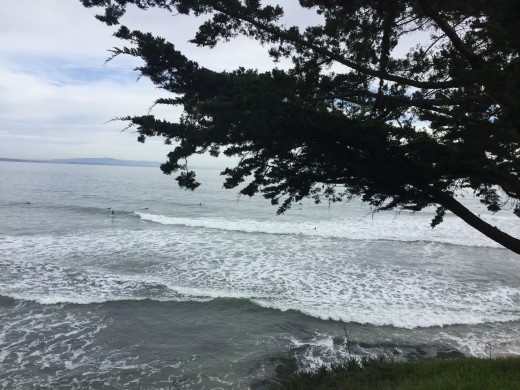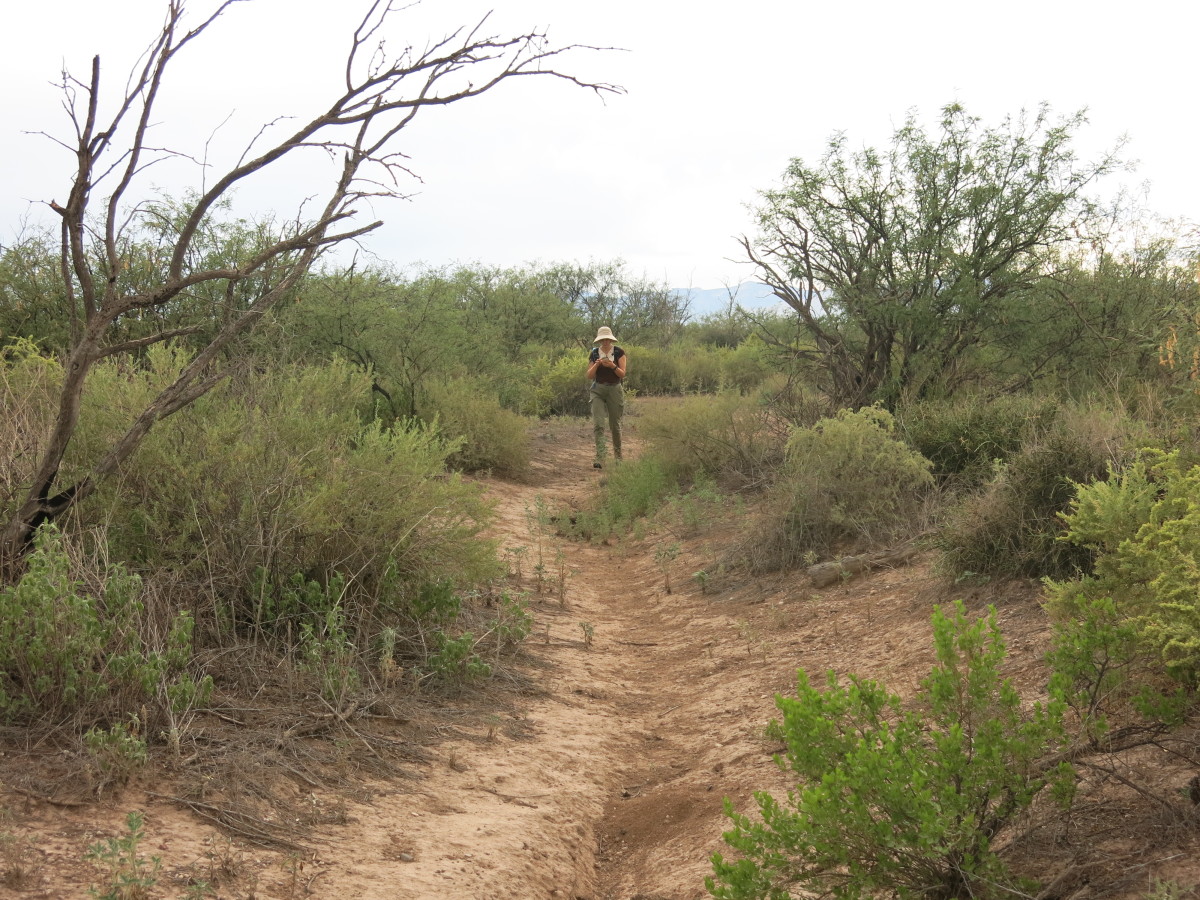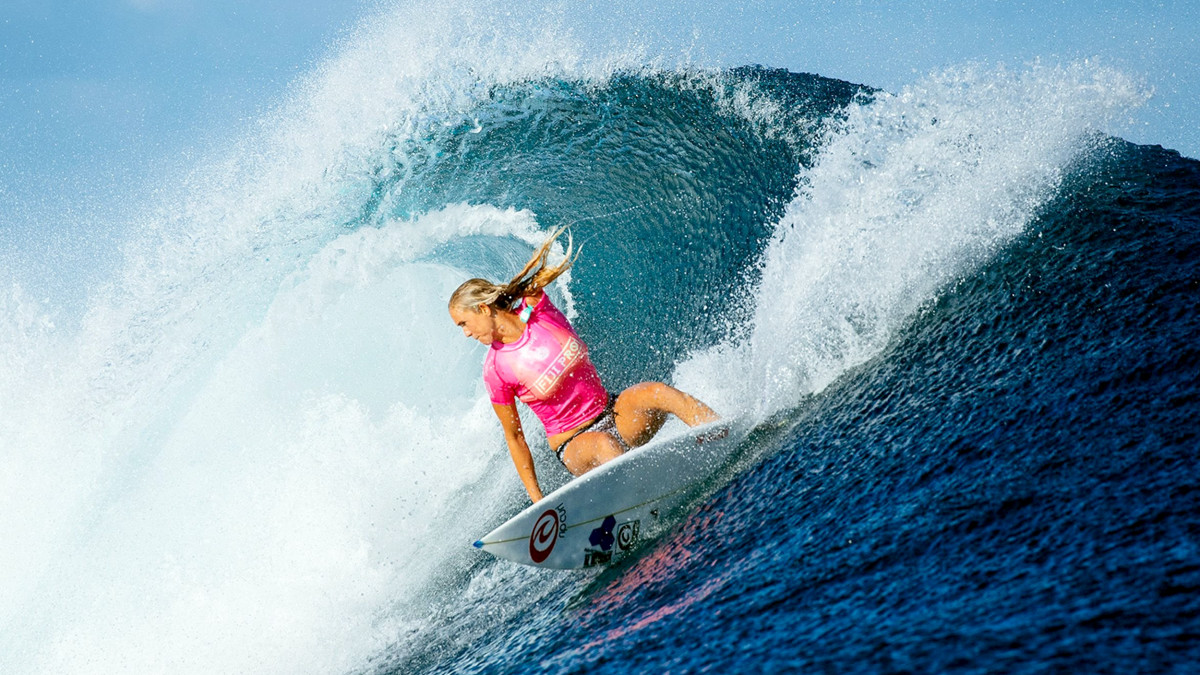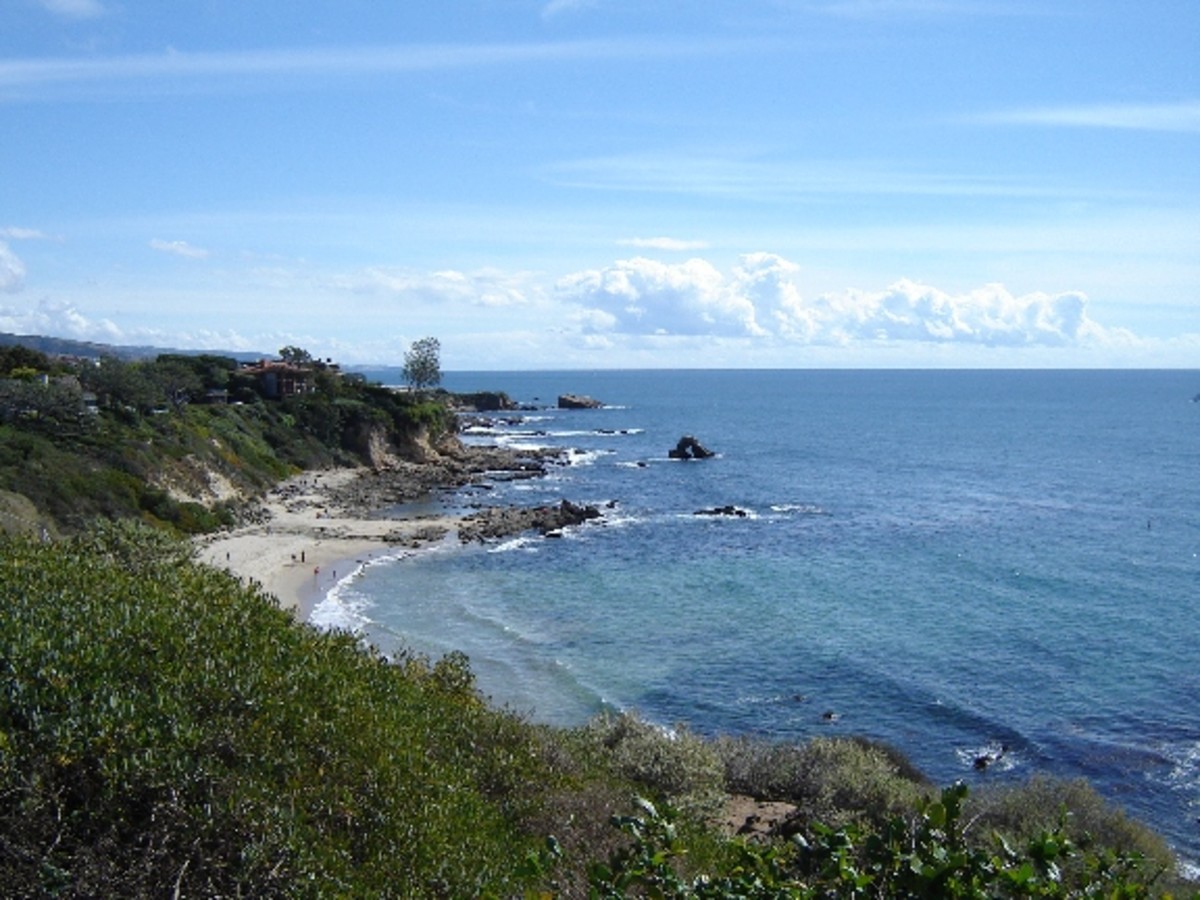Who Brought Surfing to California?
Surfers in Santa Cruz
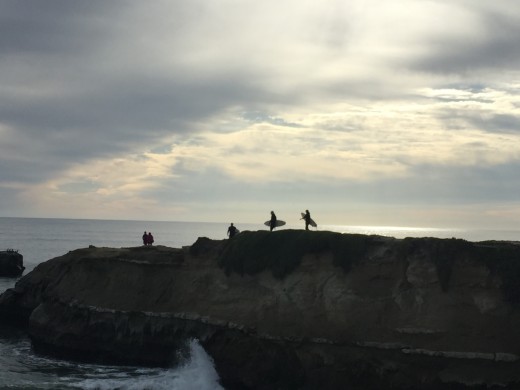
Learning About NorCal Surf Culture
While visiting family in Santa Cruz, we drove along West Cliff Drive to one of the best surfing spots in the area. Parking on a side street, we walked along the cliffs to watch the surfers of all ages catch and ride waves.
Continuing along the cliff we stopped at a lighthouse near a point. With it's door open, we walked inside the Santa Cruz Surfing Museum. Founded in 1986, the small museum offers a fascinating collection of historical photos and information about how surfing became a sport in California, specifically the Santa Cruz area. The lighthouse was built in 1967 as a memorial to surfer Mark Abott who died while surfing at the point's surf break.
Santa Cruz has evolved into one of the most popular NorCal surf spots starting in the 1930s. Woodie wagons and cars with real wood paneling along the side of the cars were popular to drive and carry surfboards on top to the best surf beaches..
Wood surfboards and longboards were made in the 30s and 40s. Foam and fiberglass boards were created in the 70s. They were shorter and faster, creating a new way to surf on waves. Examples of these boards are found in the museum.
Santa Cruz Surfing Museum

The Royal Lineage of Surfing
The surf industry is a billion dollar industry in Hawaii, Australia, Mexico and both coasts of the United States, especially in California.
According to surfing lore, the sport started in the late 1880s while three Princes from the Hawaiian Islands were sent to a boarding school in Northern California.
These boys - Jonah Kūhiō Kalaniana'ole, David Kawananakoa and Edward Keliʻiahonui made the first custom made California redwood surfboard and surfed near Santa Cruz at the mouth of the San Lorenzo River. Whenever they had leisure time at the private military school, they would go Hang Ten in Northern California.
Outside the Santa Cruz Surfing Museum is a plaque dedicated to these three princes.
It wasn't until 1907 along the Los Angeles beaches to Redondo and Huntington Beach, that George Freeth brought surfing from Hawaii to Southern California. He was hired by Henry Huntington to ride Huntington's railroad and surf up and down the coast to Huntington's pier at Huntington Beach. Freeth promoted surfing and life guard skills at the beach while riding Huntington's train.
Three Princes from the Hawaiian Islands
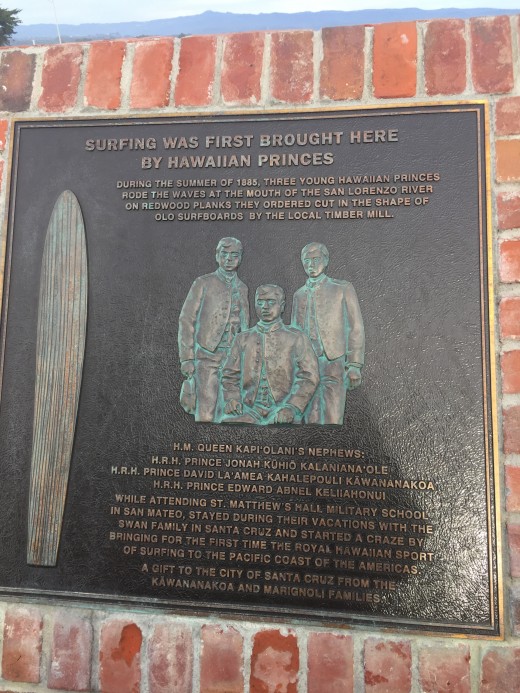
Popular Surf Lingo
Most surfers have their own lingo they use when out on a wave or talking to other surfers. The words have become popular with non surfers too in their daily conversation. Here are a few of the most popular words surfers use -
Barrel - This is where the wave is hallow while it's forming and breaking. It's also known as "tube."
Betty - Hot surfer chick, quite a looker.
Cowabunga - Started in the 1960s. It's an enthusiastic word used when a surfer rides a large wave and takes the drop. It became famous in 1960s Gidget movies.
Dude - Definitely came from the surf culture. It can mean different things based on the tone and inflection.
Epic - Awesome surf or extremely good waves.
Face - The unbroken part of the wave
Gnarly - A 70s term for dangerous surf conditions.
Goofy Foot - Used for a left handed surfer, who surfs with his right food forward.
Landlord - NorCal surfers term for shark - "You don't want the landlord to show up and ask for rent."
Lo' Caj - means Chill.
Offshore Winds - What makes the waves hold its shape - blows the spray off the top, known as "smokers" or "steamers."
Quasimodo: Riding a wave on the nose of a surfboard in a crouched position with one arm forward and one arm back, named by surfer Mickey Muöoz.
Rad/Radical: Excellent waves
Shoot the pier: Riding between the wood pilings of the pier. This can be very dangerous.
Shread: To surf in a flashy, skillful manner.
Wipe Out: Fall or get knocked off your board by a wave.
Betty and Gidgets
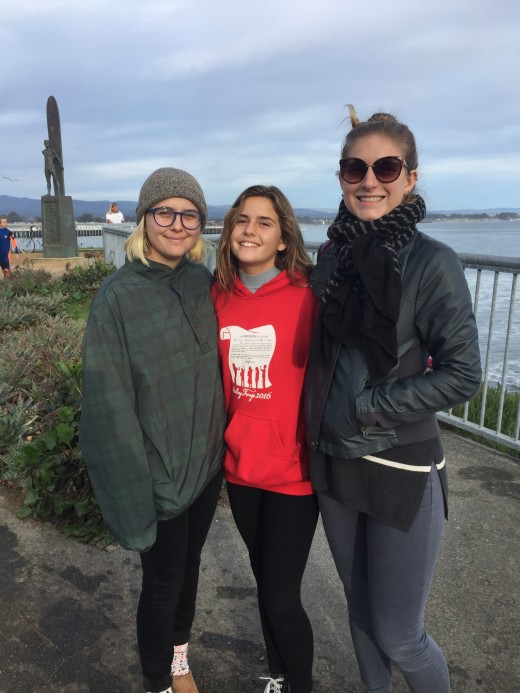
Gidget
At the age of 15, Kathy Kohner met a group of surfer dudes in Malibu with the nicknames - Moondoggie and Golden Boy. Due to her 5'1" stature, the guys called her girl midget, which turned into her nickname Gidget.
Kohner came home from her surfing adventures and wrote detailed experiences in a journal. In the mid 50s, her father Frederick Kohner thought her surf-culture stories would make a great book, and with her approval, wrote the book - Gidget: The Little Girl with Big Ideas. It sold over 550,000 copies and was later purchased to make three Gidget movies. The Gidget phenomenon was also turned into a television show starring Sally Field.
Kathy Kohner continues to make appearance at surf charities and was named Woman of the Year in 2011 at the Surfing Walk of Fame in Huntington Beach, CA.
Cowell Beach and Main Beach
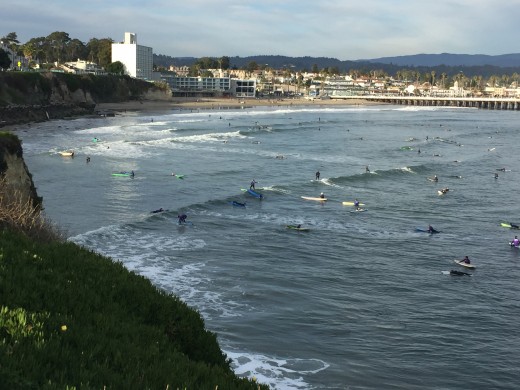
Beginning to Advanced Surf Spots in Santa Cruz
Cowell Beach is a great surf spot to learn how to surf. There are a variety of surf schools that rent the equipment and offer surf lessons. They will teach you on sand first, then get in the water with you to make sure you succeed.
Experienced surfers like to surf at Steamer Lane near Point Santa Cruz. There is a sign stating that 100 people have drowned at this dangerous point, yet to our amazement, we saw surfers climb over the low chain link fence and walk out to the cliff with their board. When the tide and waves are just right, they jump into the water with their surfboard. This is less energy used than paddling out to get the larger waves.
After surfing a wave, these surfers glide or paddle to shore, climb up boulders, and walk up a stairway leading up to West Cliff Drive. Then they walk (usually barefoot) along the cliff on a paved sidewalk back to the Lighthouse Point (near the Santa Cruz Surfing Museum), climb over the fence, walk out to the end of the point and jump into the water again. It's quite a show. People gather around at view spots to watch and cheer on these athletes.
In NorCal Surfers Wear Wetsuits Year Round
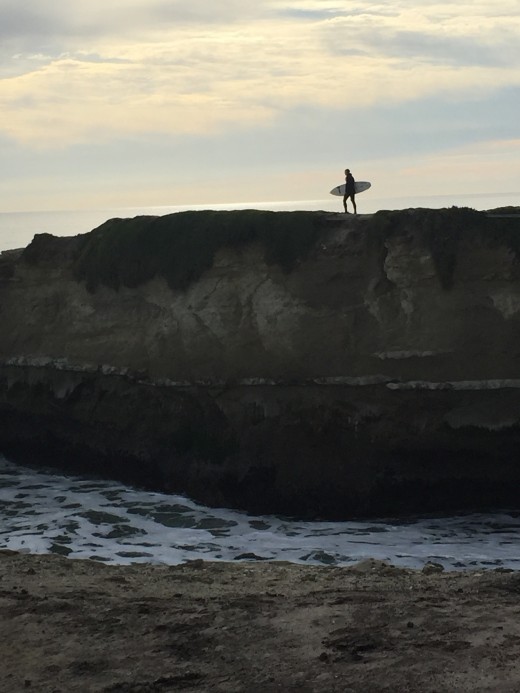
First Wetsuit For Surfers
Before the neoprene wet suit was created to provide thermal insulation in cold water, prevent abrasions and aid in buoyancy, surfers would wear wool bathing suits to try to keep warm in the chilly water.
A California Physicist Hugh Bradner designed and created the first wet suits to keep surfers and divers warm and protected. Brander became known as the "father of the modern wetsuit."
Next, Jack O'Neill created an updated wetsuit and started his own O'Neill manufacturing company in 1952. Seven years later, when the company achieved success, O'Neill relocated to Santa Cruz, CA and created the O'Neill motto "It's Always Summer on the Inside".
Around the same time, twin brothers Bob and Bill Meistrell created a neoprene suit in the early 1950s in the SoCal surf region of Manhattan Beach. This invention led up to the creation of the Body Glove Company.
What is your favorite water sport?
Picturesque West Cliff Drive
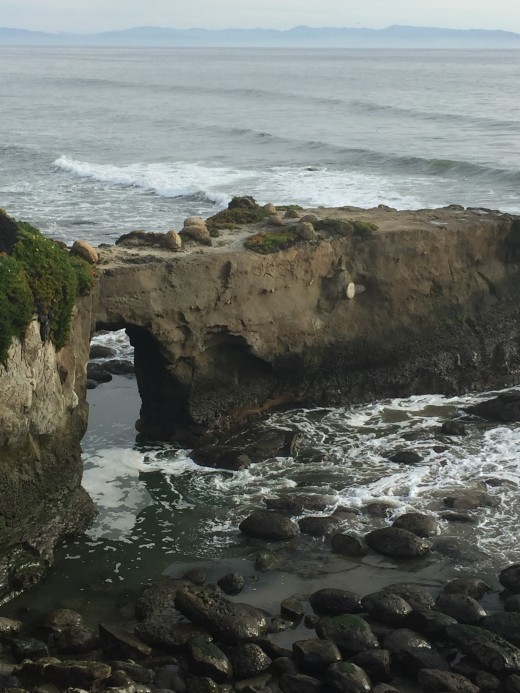
First Surf Leash
Before the 30s, surfers took cotton ropes and attached it to their board and to a belt that they wore while surfing.
Inside the surfing museum, I learned that in the 1970s, wetsuit inventor Jack O'Neill's son Pat O'Neill, took surgical tubing and fastened it with a suction cup to the foot of the board and to a surfer's wrist, to keep a surfboard from floating away after a fall or end of a ride. Sadly, Jack O'Neill permanently lost his sight in his left eye after his leashed board snapped back and hit his face.
Other surfers created their own leashes from lengths of marine surplus bungee cord. Many now attach the leash with a velcro cuff to an ankle. Some believe this is much safer.
Santa Cruz, California
